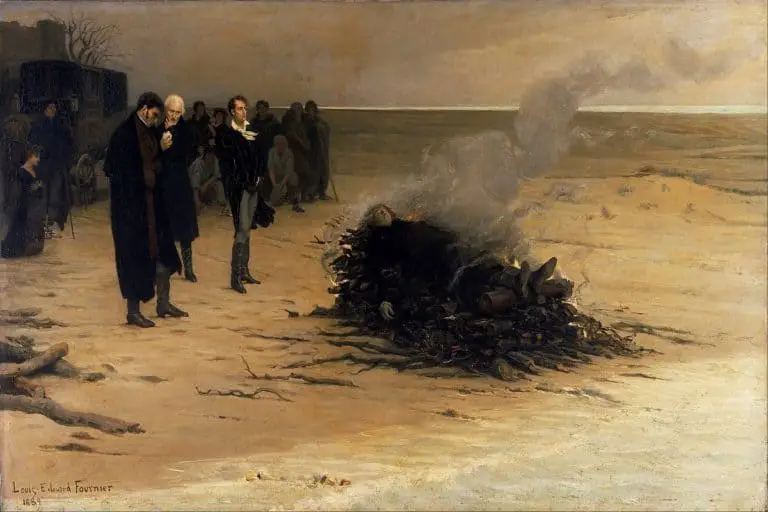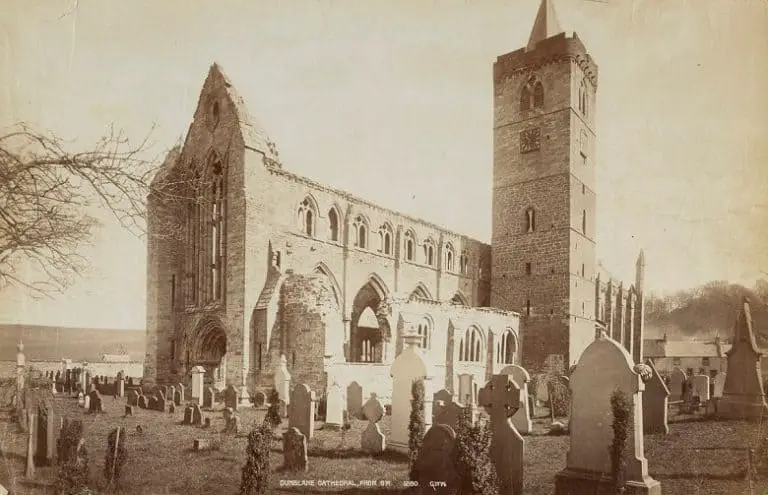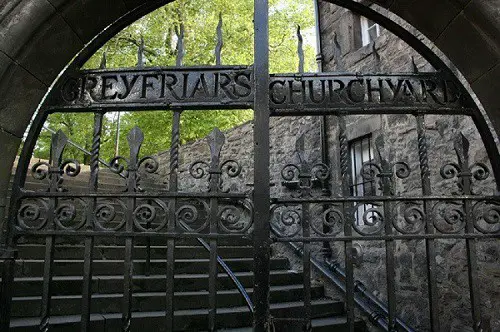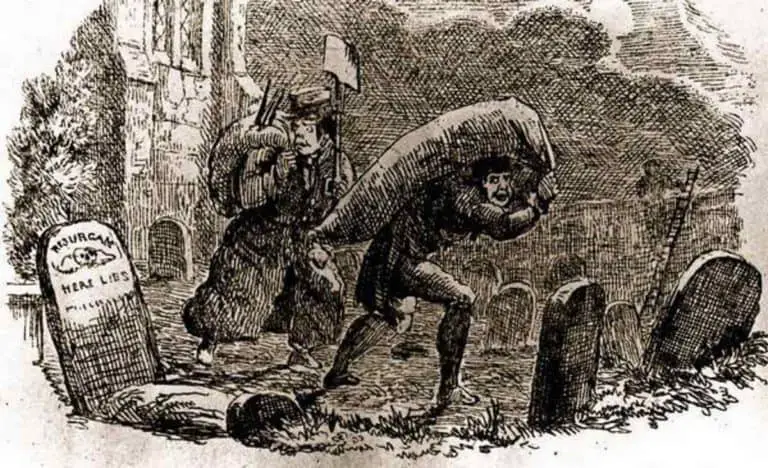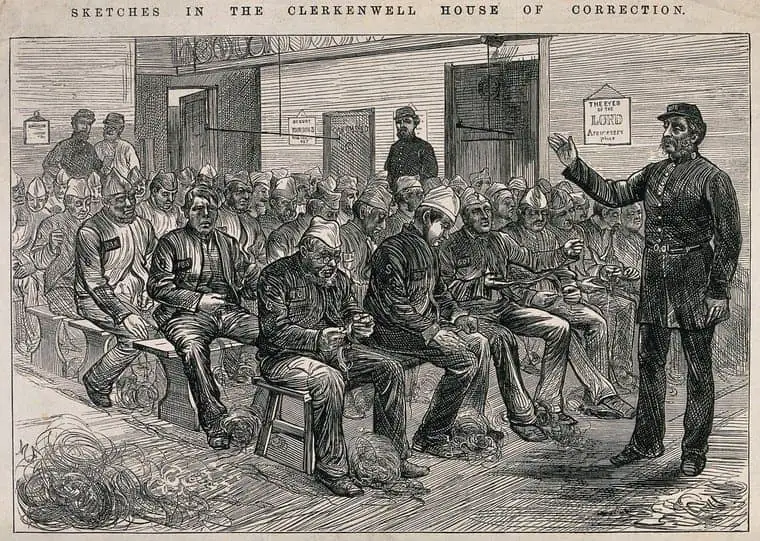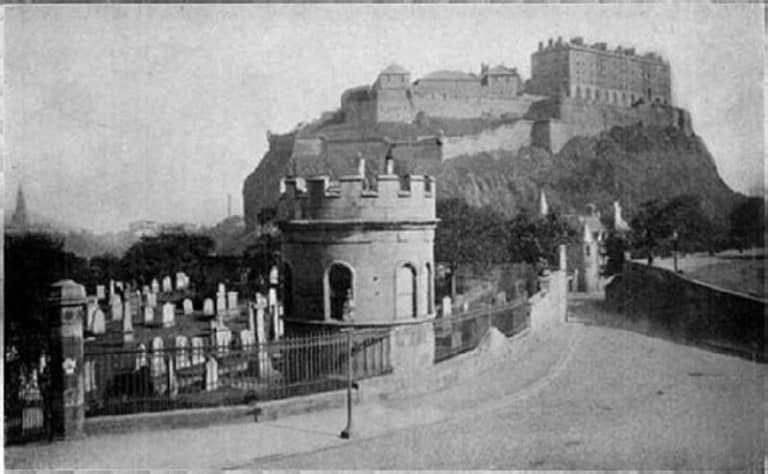5 Bizarre Hiding Places Body Snatchers Used For Cadavers
I’ve read some bizarre accounts in my time about body snatchers dumping cadavers in haste so that they can make their getaway after being spotted on their way out of a graveyard.
Some have been more ingenious than others, as you’ll see below, especially the account of the Glasgow students dressing their corpses in clothes to get it through the toll booth!
It’s not a complete account by any means but just a few tales that show what some body snatchers got up to when they had to think on their feet!
Not that much to cover, but some great stories lie ahead. So, without further ado, let’s dive straight in and take a look at the first bizarre hiding place, dung heaps!
Dung Heaps
If you want to blame anyone for this blog post, then blame body snatcher Joseph Naples and his decision to stuff a cadaver head first into a dung heap in Reigate.
I love finding out about Naples and his time spent in ‘the trade’ and although this isn’t my favourite story about him, it’s certainly a close second.
What’s my favourite story you say? This one here, about the time he escaped from jail and sent his prison clothes back with a note saying he no longer needed them! What front!
But for now, let’s take a look at the time he hid a cadaver in a conveniently placed dung heap.
Joseph Naples | Reigate, England
After finishing an earlier prison sentence in Coldbath Fields Prison from which he escaped, Naples turned his focus onto the town of Reigate with fellow body snatcher George Marden.
In the spring of 1819, after a successful raid on the parish church, Naples and Marden, along with the corpse of Ann Johnson slung in the back of their cart, were making their way home when things started to take a turn for the worse.
Their 5am raid was about to come undone for they were spotted by a carter on his way to work on the Reigate Road, travelling in the direction of Sutton.
Realising that they had to make their escape, the pair sped up their little cart, but to no avail. The carter had already informed the horse patrol and was tailing them out of the village.
It wasn’t long however before the cart was spotted, pulled up against a dung heap, where three men could be seen hastily shoving a basket into the stinking mound.
The men were quickly pursued and despite Marden and the third unknown accomplice making their escape, and Naples wriggling free from the clutches of the patrol, they were eventually brought before Union Hall magistrates on a charge of stealing several bodies from the churchyard in Reigate.
It Seems dung heaps were to be a popular hiding spot for resurrectionists caught on the hop.
Thomas Hodge | Larbert, Scotland
In the spring of 1823 body snatcher Thomas Hodge, alias Stevenson was apprehended and eventually sentenced to seven years’ transportation after he was spotted removing bundles from a dung heap in Linlithgow, West Lothian.
When authorities caught up with him and his horse and cart in town, it turned out that he’d been more than a little busy clearing out the churchyard of nearby Larbert.
It wasn’t long before an angry mob gathered and dragged Hodge roughly from his cart. His life was saved only by the arrival of the police.
Hidden in the back of the cart, in rather a pungent state, were three corpses; one of which was that of a child. The bodies had already been tied up ready for shipping, their knees up onto their chest. A rope had been passed behind the knees then tied tightly up around the neck. Like a trussed up chicken.
Although Larbert had a watch house as a means for protecting their dead, the watch was conspicuous in their absence on this occasion.
Dressing Up A Corpse
Scotland’s medical students were known to be heavy pilferers of graves and Glasgow’s students were perhaps some of the most ruthless among them.
Known to have paid for their tuition fees in corpses, it is perhaps of no surprise that Glasgow’s students were the most ingenious when it came to smuggling a cadaver from the grave.
Glasgow Medical Students | Mearns, Scotland
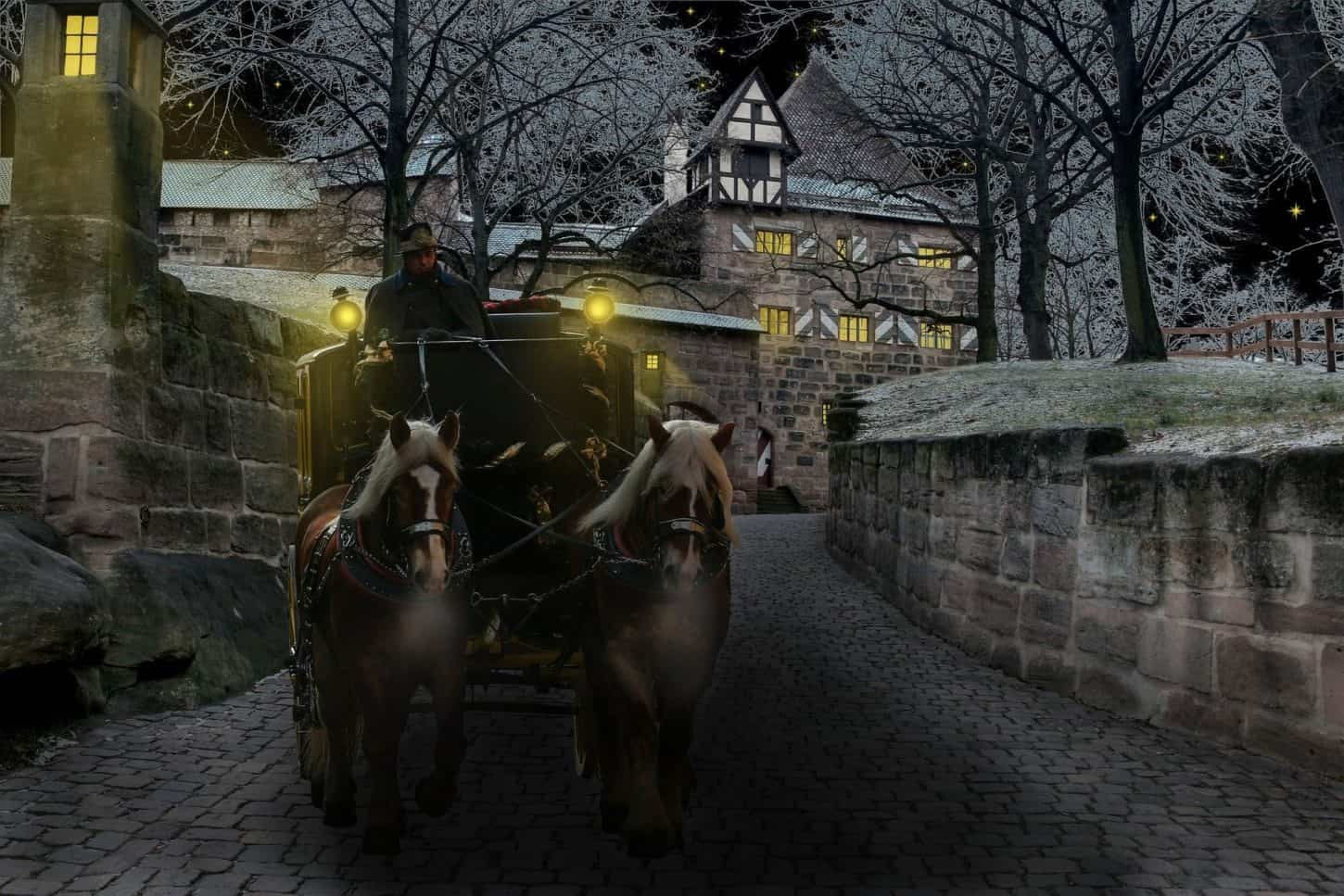
This next story, for it seems a little wild to be true, takes place in the parish of Newton Mearns, just outside Glasgow.
Following a raid on the small churchyard, two students were making their way back to their medical school when they realised that they’d have to smuggle the corpse past the keeper at the toll-gate in Gorbals.
Known to have a particular dislike to body snatchers, it was too risky for the students to simply trundle through with a corpse hidden in the back of their cart so, they came up with perhaps the most ingenious method of concealment that I have seen to date.
Dressing the corpse in some old clothes, which were either taken along specifically for the occasion or just happened to be laying in the back of the cart, the corpse was then duly propped up on the front seat between the two students and passed off as a sick friend.
With its hat pulled down low and collar turned up high, the corpse, not surprisingly, looked as though it was at ‘death’s door’ as the party pulled up alongside the tollgate.
One look from the gate keeper was enough for him to believe that the corpse was indeed sick. And it was perhaps with genuine concern that he swiftly took the students’ toll fee and bade them a good night.
But be warned dear reader for a very similar tale also comes out of an unknown parish in the country and appears in the British Medical Journal in 1912 under the heading:
The ‘Corpse’ that talked: Medical Joke in the Body Snatching Days
The similarities in the stories are fascinating even if the date and location remain unknown.
Walking past a graveyard on his way home after visiting a patient, a country doctor happened to see a horse and cart standing unattended outside the churchyard wall.
Moving back into the shadows the doctor observed two men digging up the churchyard’s latest inhabitant. To his astonishment, the pair made their way to the cart and proceeded to prop the cadaver up on the front seat just as the students from Glasgow had done.
After wrapping a cloak around the naked corpse, the two men returned to the graveyard to remove any evidence and return the grave to how it was before.
In the meantime, the doctor swapped places with the corpse, placing it safely in the shadows alongside the graveyard wall. The party soon headed off on their way home but it wouldn’t be long before some niggling doubts started to set in.
‘This corpse is warm’ said one body snatcher to the other. Throwing off his cloak the doctor declared himself to the bodysnatchers. ‘Warm you say! And if you’d been where I have been for the past 24 hours you would be warm too’. At this point, the two body snatchers fled in fear of their lives.
Sound similar? That’s practically the same punchline that ‘Dandy Jim’ delivered to the body snatchers in Eckford when he jumped up from the back of the cart. These stories are so similar that they are either one and the same or, as many body snatching tales where no hard evidence is given, it has become the stuff of folklore with many a parish laying claim to its originality.
Slung Under A Hedge
Although dull, there’s been quite a lot of cadavers shoved under hedges over the years.
Some were discovered because their grave clothes were found strewn across the churchyard giving rise to a hunt for a possible abandonment, others, like the two I’m going to share with you here, have been found purely out of bad luck.
Robert Liston | Fife, Scotland
One popular story that takes place in the graveyards of Fife, Scotland, involves the famed surgeon Robert Liston, a student in Edinburgh during the late 18th century.
After hearing about a promising sounding subject in a graveyard in Culross, Liston, together with notorious London body snatcher Ben Crouch disguised themselves as sailors and made their way to the designated site.
Yes, I know it may seem strange a London body snatcher plying his trade in Scotland, but, Crouch was laying low after events in London and was taking the opportunity to teach the young Liston a trick or two about the trade.
No sooner however had the cadaver been lifted and the soil put back into place, Liston and Crouch were hunting for an Inn to slake their thirst. With the cadaver all tied up in a sack, it was thrown over a nearby hedge and the two men settled down for a well-earned rest.
Just as they had started to flirt with the barmaid, however, the pub doors flung open and a young sailor burst forth with nothing other than the sack underneath his arms. You can imagine the look of utter horror on the men’s faces.
If there ain’t something good in this sack, rot them there chaps who stole it
Turns out the young sailor had been sleeping off some excess alcohol under the hedge when rather unceremoniously, a cadaver had landed on his head!
Horrified, the two men quickly fled the scene but not before Liston had scooped up the cadaver and thrown it over his shoulders. Needless to say, nothing more of the tale is recorded and the famous surgeon Robert Liston, lived to fight another day.
Henry Gillies | Anderston, Scotland
The reason this story is one of my favourites is not that Henry was a prolific body snatcher or that he was said to smell like a corpse, or even the fact that he threw this particular cadaver over the hedge into Mr May’s garden.
No, the reason I like Henry so much is that when I managed to track him down later to his ‘humble abode’ in Little Ireland, Manchester, he’d become even more disgusting and ‘unwashed’ than he was in Glasgow.
But let’s pick up his story in Glasgow first, before heading over the Pennines to Lancashire.
Anderston Burial Ground | Glasgow, Scotland
It’s 1828 and St Patrick’s Day was only just dawning as Henry Gillies and three associates were packing up their tools and securing cadavers into a sack
They’d not long left the graveyard at Anderston when they were heard by the parish watch walking along North Street, a street that ran adjacent to the New Burial Ground.
Realising that the game would soon be up, Gillies slung the sack he was carrying over the nearest hedge.
It doesn’t take a genius to realise that Gillies was quickly apprehended; the fact that he’d tossed the cadavers into a garden right opposite the watch house of course didn’t help, nor did the fact that when the sack was opened the naked body of a woman and child were found.
Following a great piece of detective work by officers from Anderston Burgh Police, two exhibits were produced for the upcoming trial.
Exhibit A
A spade found close to where the sacks had been discovered, covered in the same soil as could be found at the graveyard
Exhibit B
Henry Gillies Shoes – Removed at the police station upon his arrival and also found to be covered in soil from the burial grond
A search of the accused’s home was also made prior to the trial where officers found a small compartment hidden beneath the floorboards that when opened contained ‘A small selection of water and blood … the stench of the apartment was exceedingly strong and offensive’. Although Gillies put up a great defence in court, I doubt if anyone actually believed his story.
Surprisingly, the outcome of the trial is unknown on this occasion, but we do know that Gillies had many convictions throughout his career so presumably could add another to his list.
Little Ireland | Manchester, England
Three years after Gillies was arrested in Anderston, we find a man of the very same name in Little Ireland, Manchester, passing himself off as an articulator of skeletons.
The story unfolds as an inquisitive ten-year-old girl stops to spy through a crack in the doorway of Amelia Anderton, Henry’s mother.
What she sees sparks a near riot and the resulting turmoil is the stuff of legend.
Inquisitive eyes believed they’d witnessed the skinning of a greyhound through the small crack in the door and by the time the girl had gone and spread the news, the story had escalated and the gathering mob wanted to know what was going on in Amelia’s kitchen.
They had every right to be concerned. In a jug in the corner of a cupboard lay the skeleton of a child with ‘the whole of the flesh having been removed from the bones’.
That’s not all. In the corner of the room, laying on a pile of wood shavings was a child so sickly that she probably wouldn’t have lasted the night.
The mob that had gathered were incensed and when the landlord called on the police to help, Amelia was immediately taken into custody. Amelia, according to The Standard:
“Would in a former age have been accounted sufficient to support a charge of demonology or witchcraft’
It wasn’t long before Amelia’s drunken son, Henry Gillies, walked brazenly into the police office, heading straight to the front desk and openly declaring himself as a body snatcher as well as an articulator of skeletons.
During the trial, which culminated in both parties being sentenced to bail and having to find two sureties of £20 each, Gillies quietly informed the court that he was employed in making preparations for a number of different surgeons in the town.
Much to the horror of the inhabitants of Little Ireland and completely unknown to anyone, Gillies had acted against the advice of the surgeons and had started taking his work home with him.
As things died down and the rumours started to subside, short reports began to appear in the penny press speculating that the mother and son duo were in the pie making trade and readily supplying Knott Mill Fair!
River Banks & Watery Graves
The story of Janet Spark is a relatively well known one in the macabre world of body snatching for the unfortunate Janet was snatched just three days before Christmas Day.
Aberdeen Medical Students | Torry, Scotland
In 1808 the churchyard of St Fittick, in Torry, Aberdeenshire was a remote place away from the main city itself. The winter weather would have been wild and unforgiving, even more so as the coastal churchyard lay near the banks of the mighty Nigg Bay.
After successfully lifting ninety-year-old Janet Spark’s body from her grave, the body snatchers, a group of Aberdeenshire medical students, started to get jittery.
Convinced that they were going to get caught red-handed with Janet’s lifeless body they decided to temporarily re-bury her in the sandy banks of the Bay that lay so close to the churchyard.
All would have been well if the Scottish weather hadn’t been true to form and had whipped up a winter storm which meant that Janet’s corpse couldn’t be retrieved as soon as the students had hoped.
Unfortunately, during this time, the breaking of the sea on the banks of the Bay was pretty darn ferocious and the constant pounding of waves on the sandy banks had gently washed Janet’s body free.
The poor woman was finally found two months later when she washed up in the Bay, opposite the church where she used to worship.
Eight years later, Superintendent Gibb of Aberdeen Harbour Works, was generous enough to donate a huge mortstone to the church for the whole parish could benefit from, although unfortunately, this was a little too late for Janet.
Unknown Body Snatcher| Long Benton, Newcastle, England
One January evening in 1830, the hand of a corpse was found sticking out the banks of a stream in Long Benton, Newcastle, not too far from the parish church.
A strange thing to observe and one which immediately caused the boy who found it to rush for help.
When the corpse had finally been dug free and the mud cleaned off, it was found that the rest of it was tied up in a sack.
Gingerly, the neck was untied and out spilt the grey, naked body of Martin Hall, who had been buried in the parish church one month earlier. His nose and ears had been stuffed with tow, a fibre made of flax/hemp fibres.
It was thought the Hall had been snatched two days previous and although nothing is recorded in the parish registers, snatchings very rarely are, a suspicious character had been observed in the neighbourhood earlier in the week.
Hall’s body had been placed in its watery hold to be collected at a later date, but circumstances dictated otherwise.
Unknown Body Snatcher | Paisley, Scotland
As a single boat was passing along the Paisley Canal, near Hawkhead Bridge in 1824, one of the crew members spotted something unusual in the water.
Pulling up alongside the package, they noticed that it was actually tied to one of the pier legs and rested just below water level.
Removing the bundle from the water, the naked corpse of a young girl was found bound up inside. It is thought that she had been left there by body snatchers so that she could be collected at a later date.
Her fate is unknown.
The Deceased’s Bed
This next bizarre hiding place occurred in Fife, Scotland although I very much have my doubts as to the authenticity of the story.
It once again involves Robert Liston, who we met earlier, this time trying his luck at body snatching with a fellow student.
Robert Liston | Leven, Fife, Scotland
After lifting the recently buried body of Innkeeper Mr Henderson from the churchyard in Leven, Fife, Robert Liston and his fellow student were heading home when the student he was with took a turn for the worse.
Their only option was to call at a local Inn for a fortifying glass of brandy which was taken in a quiet room upstairs away from the main bar.
As they were just finishing up, rumours could be heard wafting through the floorboard from the bar below. The parish had become aware of the snatching, and a hunt was on for the perpetrators. Even worse, the local police were out in force and a search was being made on the pub right there and then for stolen goods.
In a moment of panic, the two students, who still had Henderson’s corpse with them, rushed into an adjoining room and hid their bundle in the nearest bed they could find before leaping out of a nearby window and making their escape.
As the evening wore on and the night came to a close the landlady of the pub blew out the candles, made the doors secure and headed on up the stairs to bed.
Unknown to Liston and his associate, the cadaver they stole that night was that of the Innkeeper whose pub they’d just frequented and the corpse they’d hastily stuffed under the bedcovers was the body of the landlady’s recently deceased husband.
Taking Things Further
Most of the cases I write about can be found in the British Newspaper Archive (£) and can easily be found after some simple searching.
For accounts in Scotland, I generally turn to Norman Adams ‘Scottish Bodysnatchers: True Accounts’ which is available via AbeBooks.co.uk
My brief account of Henry Gillies and his time in both Anderston and Manchester has been taken from a chapter in my book ‘For The Purpose of Gain and Profit’ where I retold his story in more detail.
For a full and vivid account of the life of Robert Liston who successfully graduated medical school in Edinburgh and ended up as an eminent physician, then you’ll really enjoy ‘The Butchering Art’ by Lindsey Fitzharris. Copies are widely available, and you can get it online at AbeBooks.co.uk

